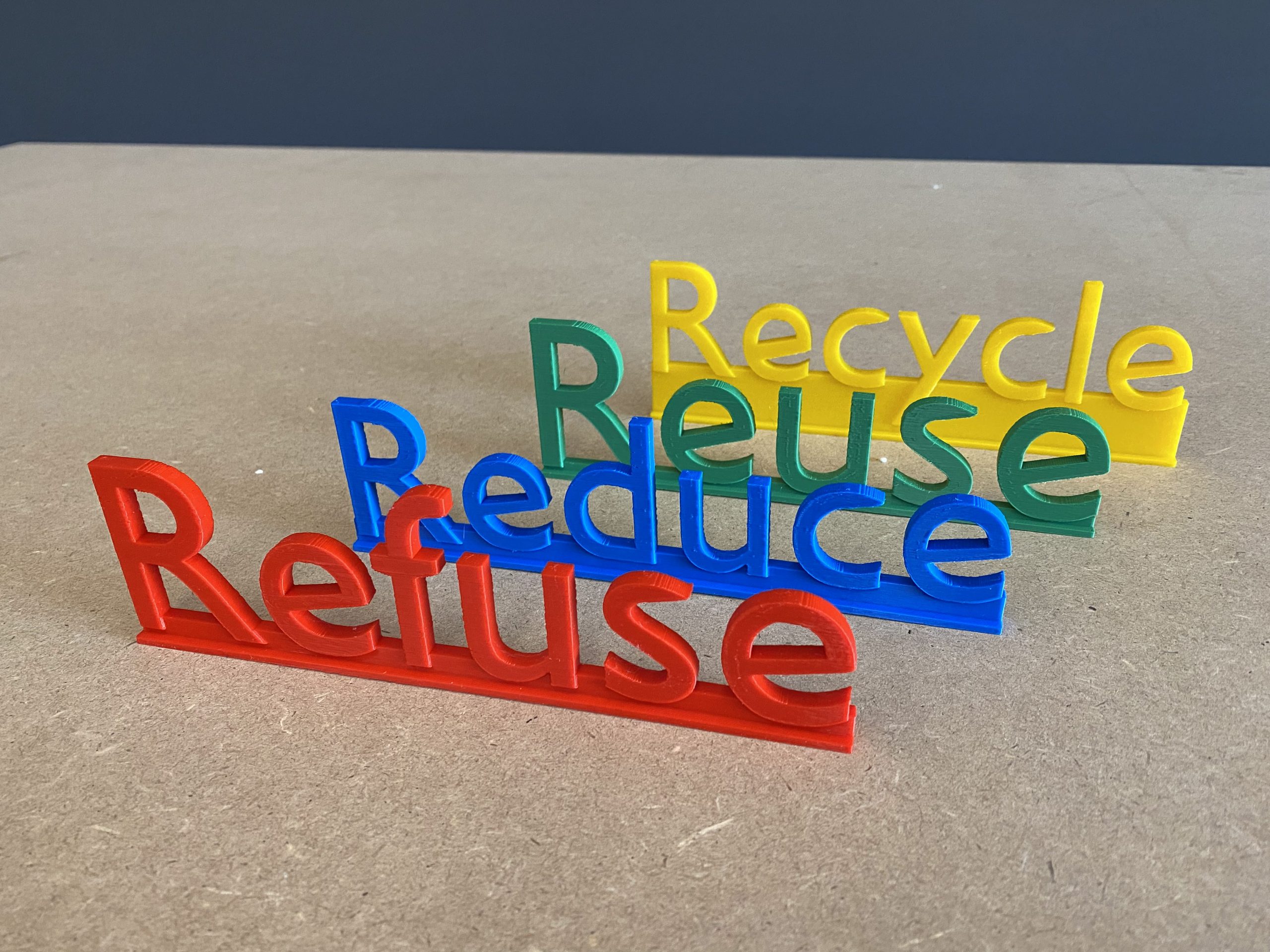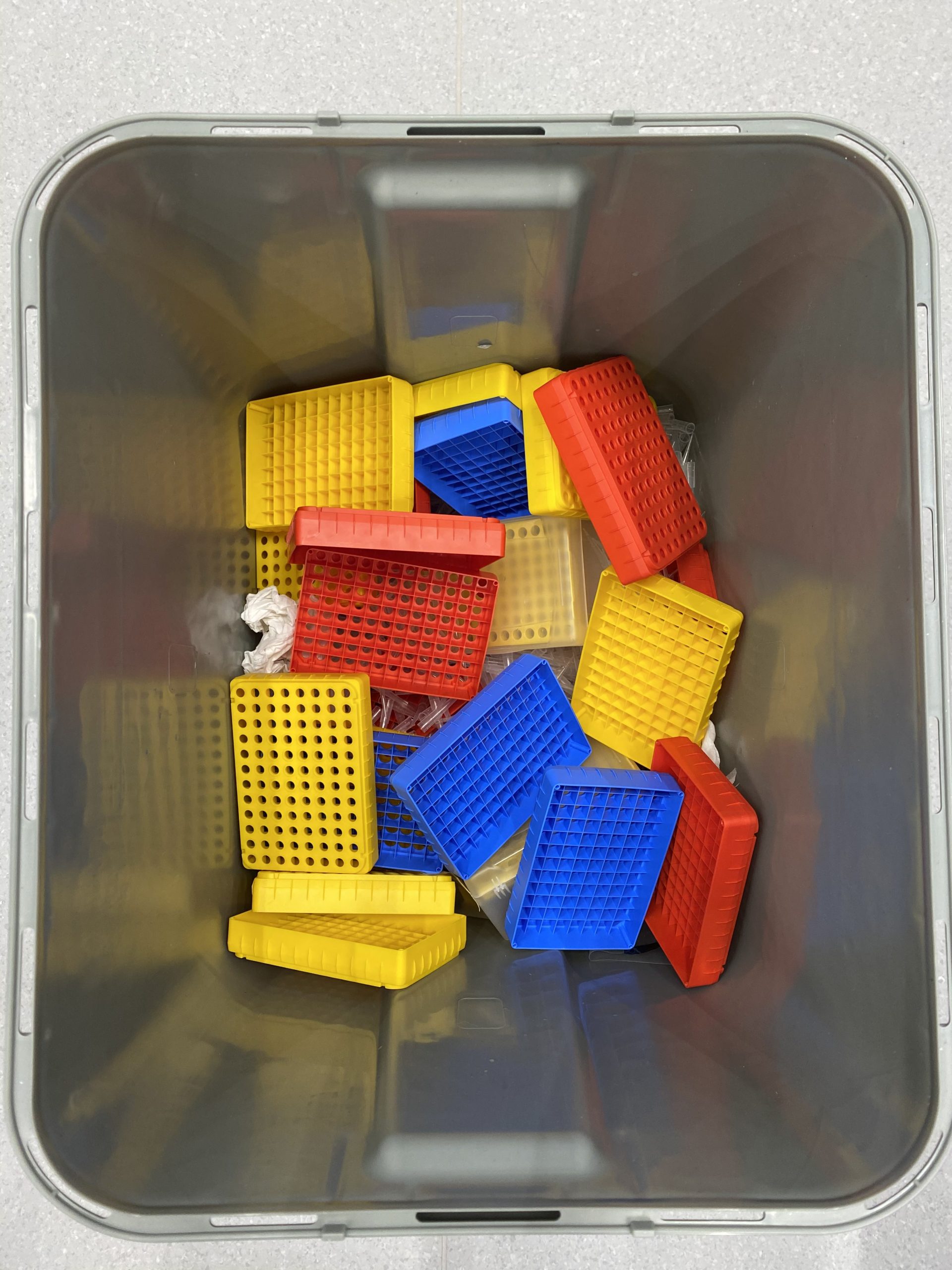Green Science
In our daily lives, we try to be very sustainable in our home life actions, by reducing plastic waste, recycling what we can, being energy conscious etc. We started to feel conflicted when we came into work to equipment being left on all night for convenience, or the kilograms of single use plastics we were sending off to be incinerated day in and day out. Therefore, in 2021, the DREAM3DLAB added ‘Sustainability’ to its core values, making it a main focus point that goes hand in hand with our research. Through initiatives and projects within our own team, as well as engaging with the national and international sustainable science community, Green Science is now part of our everyday research.
RRRReady to change
Tackling the unlimited piles of plastic waste is not the only way in which scientists can green-up their laboratories. You can also shut down lab equipment at night to save energy, buy materials in bulk to reduce packaging and transportation, choose low energy-consuming algorithms for computational work, bring your own coffee mug, travel to conferences by train, etc. But where to start? We suggest finding a group of enthusiastic colleagues and form a green team to brainstorm, create awareness and act. So did DREAM3DLAB members Hannah and Florijn. Hannah explains: ‘It felt wrong to separate waste in your personal life, but at the same time generate loads of plastic waste in the lab that is not being recycled. The recently established green team of the Princess Máxima Center now forms a strong base to change this and start making impact.’ Green actions evolve around the R’s of sustainability; Refuse, Reduce, Reuse and Recycle. Can I refuse using plastic bottles by glass alternatives? Can I reduce plastic tube use by changing my experimental setup? Can I wash and reuse my empty medium bottles for preparing a different solution? Can I recycle plastic lab waste and use it for a different purpose?
How can you use the R’s of sustainability in your lab life?
We recycle plastic waste to 3D print lab equipment
A recent big success of the DREAM3DLAB was the start of a lab waste recycle project supported by the Princess Máxima Center. Maj Buchholz (project creator) explains: “We use 3D printers to customize lab materials that are often expensive or commercially unavailable. We are now able to make plastic print filaments from plastic lab waste. The colorful tip inlets that pile up in every lab after a day of pipetting are the perfect type of plastic for this purpose.”
The freezer Challenge
Did you know that the ultra-low temperature freezers, present in high numbers in research institutes, can consume as much energy as an entire average household? Therefore, an increasing trend in green-minded laboratories is to organize a freezer challenge; the team that creates defrosting and dust cleaning schedules, a sample inventory and a sample clean up and smart storage strategy wins. Room for new samples means that ultimately less ultra-low temperature freezers are required, and regular cleaning and defrosting lets the freezers run optimally, both creating a big win in energy use. In addition, by turning up the temperature from -80 to -70 degrees, energy consumption can be saved by up to 30%, while the quality of the lab samples stored will not be affected. Together, a big reduction in energy use can be achieved by these efforts and that’s why organizing a freezer challenge is a key goal of the DREAM3DLAB and Máxima Center green team.
GREEN LABS Netherlands
Green labs Netherlands (GLNL) are a group of enthusiastic scientists from various research institutes across The Netherlands dedicated to green-up laboratories. What they aim for? Increase sustainability in research to generate positive environmental impact. How? By community building (check out the GLNL Twitter page), creating awareness through interviews, presentations, and outreach events, building ready-to-use resources on their website, and supporting local and nation-wide green lab projects. All GLNL members are part of local green teams that are working hard to reduce the footprint of their institutes. Hannah (DREAM3DLAB & GLNL member) says: “It is so encouraging to notice that most of us want to see a change and that our efforts spark formation of new green initiatives. An exciting milestone for us this year was receiving financial support from the ministry of health, welfare and sport.” With the received funds, GLNL in collaboration with Martin Farley (UCL) will roll out a Laboratory Efficiency Assessment Framework (LEAF) over 4 Dutch institutes. LEAF provides an online tool where research groups can track their sustainable efforts and be awarded with bronze, silver or gold medal certification when certain sustainability criteria are reached. This offers a straightforward and step-wise process for getting labs to operate in a more environmentally friendly fashion. Florijn (DREAM3DLAB & GLNL member) says: “This will allow us to create real impact in the form of CO2 emission and waste reduction. With the research department of the Princess Máxima Center we aim to receive the bronze medal by the end of 2021. More institutes are eager to join the LEAF accreditation system, so I expect we will get very busy in 2022!”.
Want to get involved or stay informed on upcoming events? Follow GLNL on twitter or sign up on the member forum of their website!


